Claudia Roden: ‘The first recipes I wrote down changed my life’
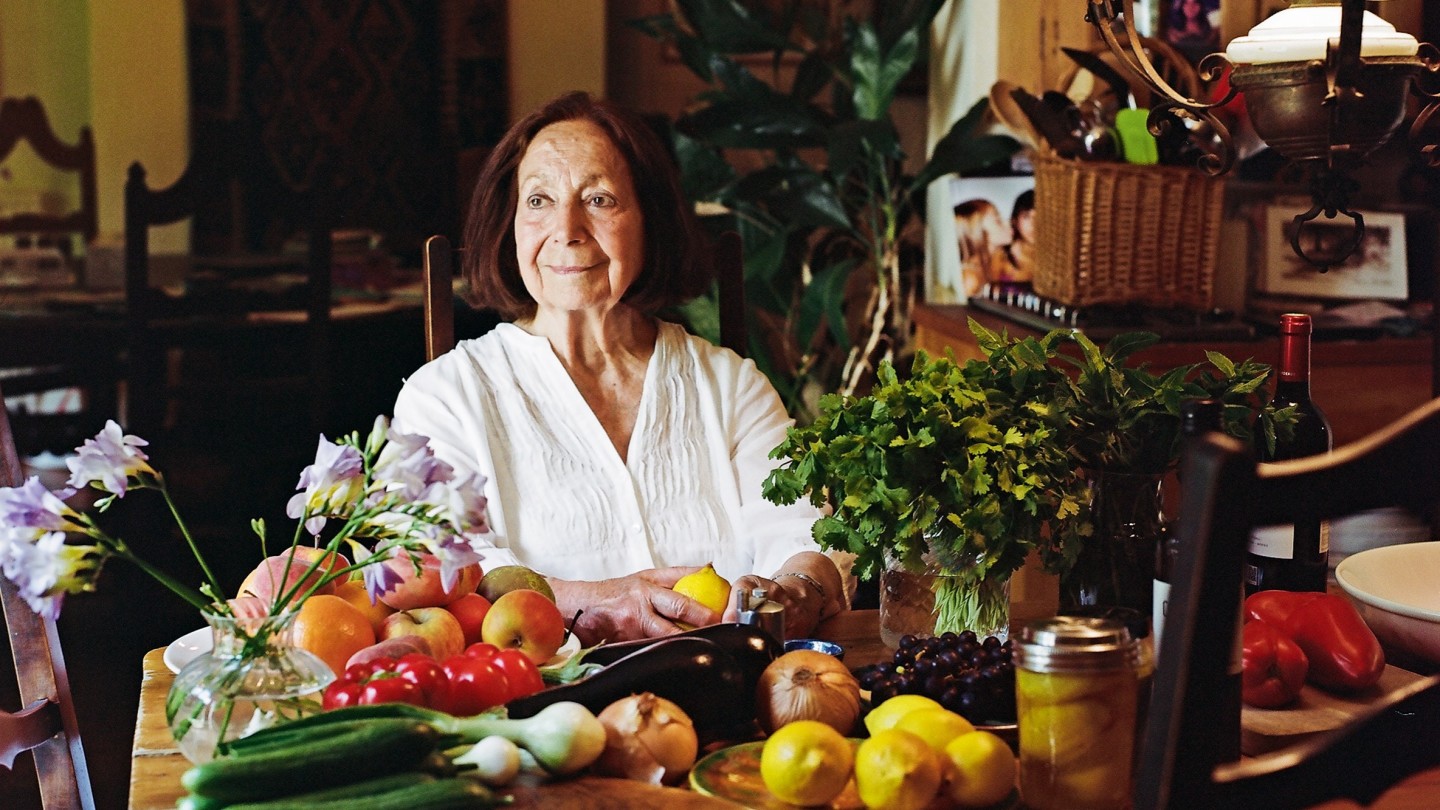
Simply sign up to the Style myFT Digest -- delivered directly to your inbox.
My personal style signifier is silk scarves by my daughter, Nadia, who is an artist, textile designer and film animator. She was recently commissioned by the White House to design a scarf inspired by an ancient Chinese plate. At events I always wear one of her scarves; I don’t dare wear anything else. I feel that it brings me luck. I have a whole collection, so there’s always one that works with what I’m wearing. The only jewellery I wear is a brooch – a copy of a Matisse star that I bought in Paris. nadiaroden.com
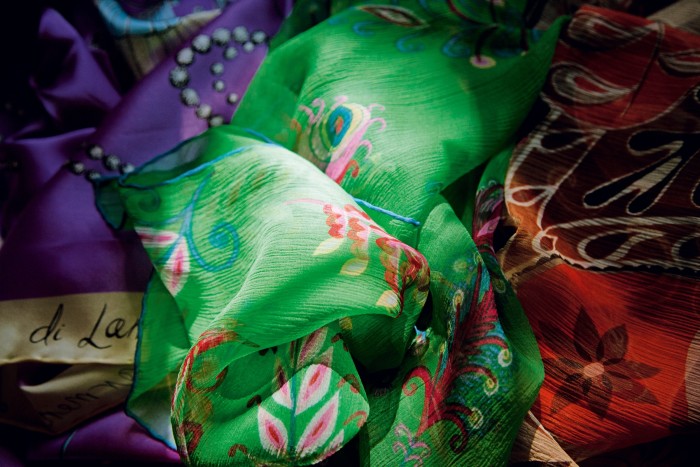
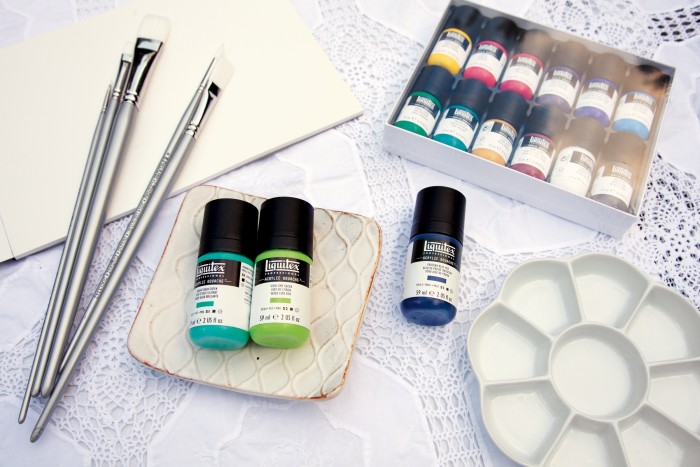
The last thing I bought and loved was a box of acrylic gouache paints, with some brushes and paper. I was thrilled just to walk into the art shop – Cass Art in Hampstead. I went to Saint Martins in the 1950s, only for two years, but I learnt to sculpt and paint. The paintings all over my house are mainly by Nadia or her friends, but a few are by me – including a big one in the hall of a village in Provence. I have always used oils in the past, so gouache is a challenge. I’ve also never painted landscapes, yet now I’m dreaming of painting forests. I’ve wanted to paint trees for years. cassart.co.uk
FT Weekend Festival
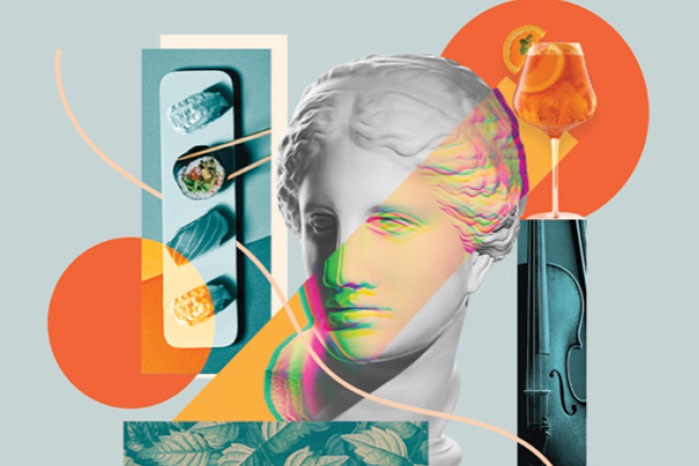
Claudia Roden will be speaking at “Cooking the Med: Claudia Roden on 50 years of food writing” at the FT Weekend Festival on September 4. To book tickets, visit here
And on my wishlist is a powerful ice cream churner that makes the white, chewy Turkish and Arab ice cream called dondurma kaymak, which I adore. In Egypt we had rose water with it; in Turkey, no rose water. Ten years ago I tried very hard to find a churner and emailed everybody in Turkey but they weren’t exporting to the UK; now there are companies that do, but they are industrial-sized and too big for me today. I would settle instead for a Cuisinart Ice Cream & Gelato Professional maker. £250, cuisinart.co.uk
An unforgettable place I’ve travelled to recently is Lundy, a magical little island off the coast of Devon with fascinating wildlife. I bought the paints for this trip but didn’t use them because there was so much going on. We were many – lots of family and friends, spread out in five houses managed by The Landmark Trust. We walked and explored and met up for picnics, barbecues and teas; some of us had guitars and we sang. landmarktrust.org.uk
A place I long to go back to is the Mediterranean. Travelling has been my life – it’s really the best part of being a food writer – and the Mediterranean has always been my focus. Everywhere around the sea I find bits of who I am, in the culture and the people. I was born and raised in a once-cosmopolitan Egypt, surrounded by a mix of cultures – Greek, Italian, French, north African – and I long for that way of being. But at home in London, cooking brings me there. The smell of garlic frying with crushed coriander takes me to the Egypt of my childhood; the scent of orange zest and cinnamon takes me to Spain; saffron and orange zest mingled with aniseed and garlic triggers memories of the French Riviera.
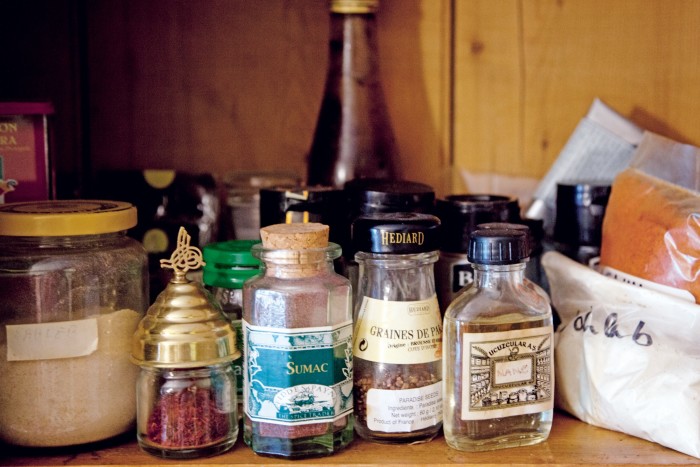
The best souvenirs I’ve brought home are spices and aromatics. I really can’t resist street markets and spice shops such as the Souk el Attarine in the Medina in Marrakech, and the grand vaulted Misir Carsisi in Istanbul. The mounds of red and gold powders, the curious-looking roots and shrivelled pods are irresistible.
The recipes that changed everything were those I started collecting when I was 20, which were from Jews leaving Egypt in 1956 after the Suez Crisis. They were recipes passed down in Jewish communities – a mosaic of families from the old Ottoman Empire and around the Mediterranean. Three of my grandparents had come from Aleppo. Every recipe was hugely precious and full of emotional baggage. And, yes, there was hummus and baba ghanoush, grilled halloumi and bulgur pilaf. The first ones I wrote down changed my life. They also changed the way people eat in Britain and around the world. Before A Book of Middle Eastern Food came out in 1968, there had been no cookbooks at all about this cuisine, no recipes in magazines or newspapers.
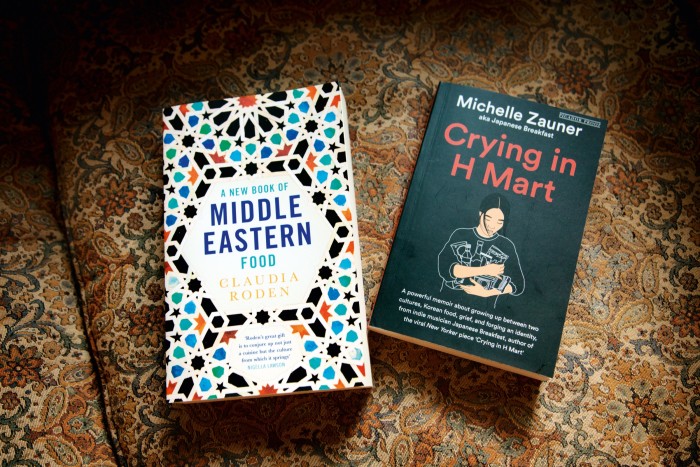
The best book I’ve read in the past year is Crying in H Mart. It’s a memoir by Michelle Zauner, a musician and singer who was born in Seoul and raised in America. The writing is frank, lyrical, humorous – and food plays a big part in it. The H Mart of the title is the name of a Korean supermarket.
My style icon is my aunt Regine, who used to go to the Paris fashion shows and bring back patterns to be copied by dressmakers and tailors in Cairo. She was the best-dressed lady in Egypt. When she moved to Paris she had little money to spend but still managed to look great and impress, even in her 90s.
A recent “find” – although everybody else has found it before me – is using an immersion blender to make mayonnaise. I very often failed with a hand whisk, and I really felt a loss of confidence. But then I went to a dinner in Amsterdam, where it was made with a stick blender, and I just couldn’t believe it. So now I succeed in making mayonnaise in minutes. It is really more aioli – I add crushed garlic, sometimes saffron, sometimes herbs or chilli. Bosch CleverMixx, from £29.99, bosch-home.co.uk
The last music I downloaded was “Ya Mustafa”, sung by Bob Azzam, an Egyptian-born Lebanese-Palestinian singer, in the 1960s. It mixes Arabic with French and Italian, and it brings me back to the Egypt of my youth, where we spoke many languages. I can’t resist getting up and dancing to it when nobody is around. Nobody wants to hear me singing, but I sing to myself.
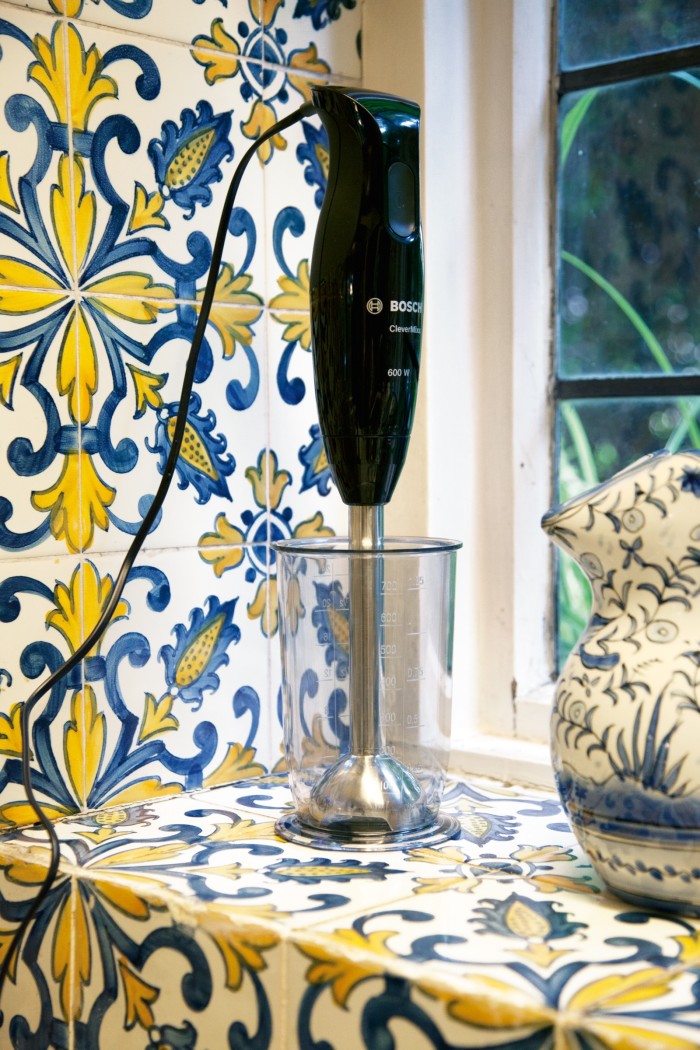
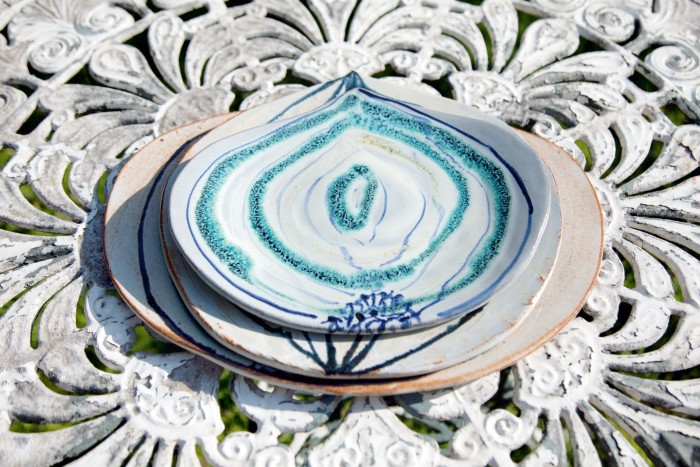
I have a collection of ceramic plates from different places – some I’ve bought, others given to me by friends. But what I use every day on my kitchen table are plates by my daughter-in-law, Ros. She shows her ceramics in exhibitions and I’ve loved many things she’s made: Seville-style plates, some that look Moorish, some Japanese. I use them to serve olives, cheese, charcuterie, meze, stuffed dates. rosamundcoady.com
In my fridge you’ll always find a lot! I feel that I haven’t got anything if I don’t have plenty of vegetables – peppers, tomatoes, aubergines, courgettes, radishes, cucumber – as well as a few cheeses and salamis. I also have tahini, harissa and things that I make, such as boiled lemons in olive oil, tapenade and muhammara, a pepper and walnut paste. And leftovers. Whenever I have friends and family around to eat I always, always overproduce; it’s our culture. And with the leftovers I make something new. A mixed vegetable dish can become a pasta primavera, a frittata, a summer salad or a shakshuka if I put fried eggs on top.
My wellbeing gurus are my children and grandchildren. They keep me happy. My daughter Anna Wolman is my life guru – I depend on her and ask her advice on everything – and I have six grandchildren, who encourage me to exercise. I only feel like exercising if I dance – which I do mostly in my bedroom, alone – but when the grandchildren come over, they bring music and we dance together in the garden.
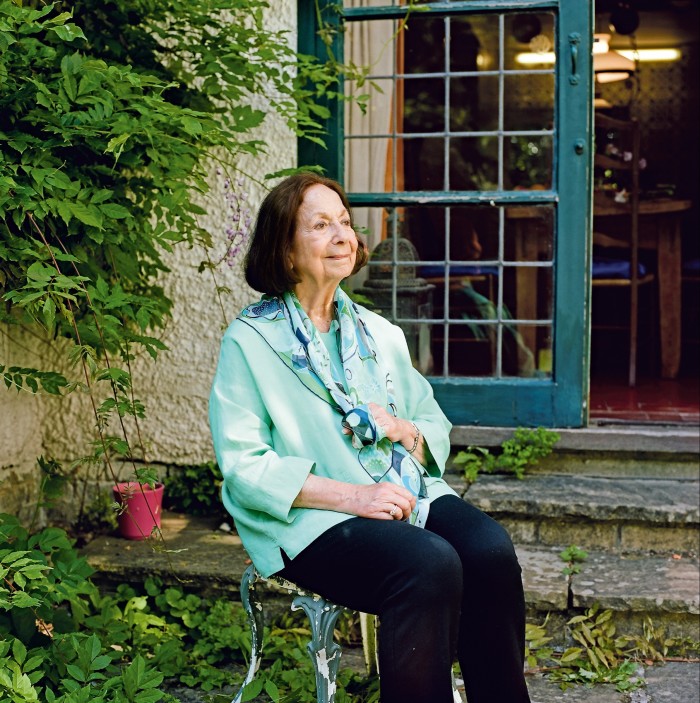
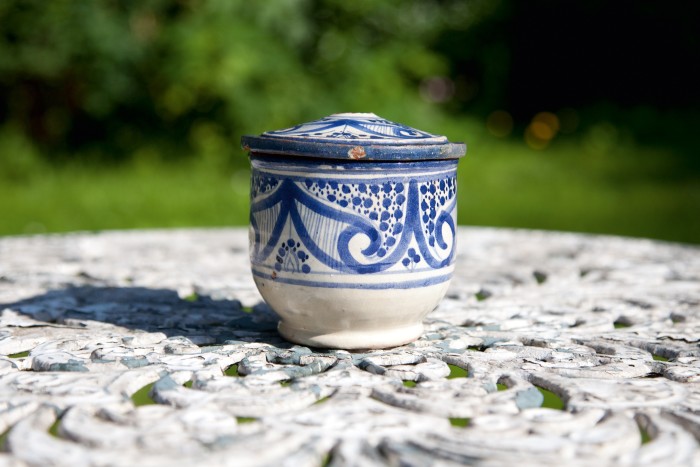
An object I would never part with is a Tunisian sugar pot that was given to me by my younger brother, who died in his 40s. The lid keeps chipping but I still use it every day to put sugar in my coffee.
My favourite room in my home is the kitchen. It’s very large with a huge built-in electric double oven by Miele – it takes up almost a whole wall – and a six-burner gas hob. The room is full of clutter – photos and objects that remind me of people and places. I’ve lived in this house for almost 50 years. My children used to do their homework on the kitchen table – a long country table that I bought from the nephews of food writer Elizabeth David. I gave cookery classes here at one time; it’s where I test recipes now and make dinners for friends and family. Whenever anybody comes to the house we go straight there so we can chat while I make something – even if it’s just a coffee.
The beauty staple I’m never without is Diorissimo eau de toilette. My aunt Regine gave me a tiny bottle when I was at art school in London in 1956, and it’s the perfume I have used ever since. I love the lily-of-the-valley scent. I also always have a bottle of rose water – by Cortas, it’s Lebanese – to splash on my face and neck. And since I was 16, I have worn black eye make-up – first kohl paste, then I used to make my own from soot, something I discovered how to do in Morocco, and now I use a kohl pencil by Clarins, with a bit of Nivea cream to soften and smooth it. I think at my age, though, you are better not to go too black. It makes you grey. Clarins Crayon Khôl, £18. Cortas Rose Water, £1.49 for 300ml, aytacfood.co.uk. Dior Diorissimo, £94 for 100ml EDT
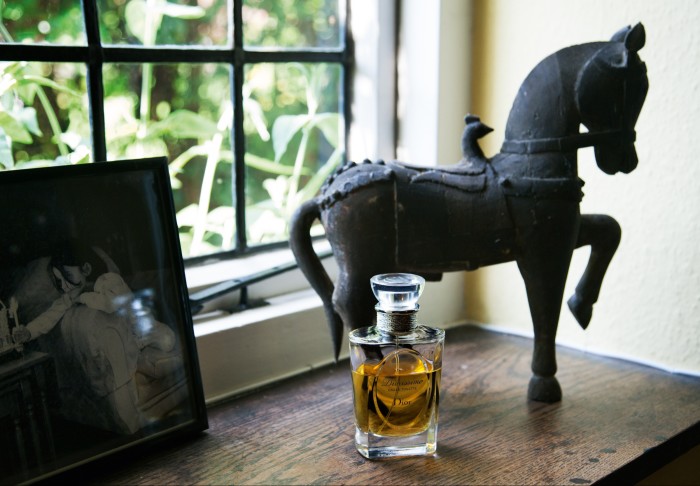
If I weren’t doing what I do, I would be an artist. I left art school when my family became refugees from Egypt and I had to go to work. I found a job at Alitalia. They paid me £7 a week at that time, but I was 20 and I could travel on any flights where they had room, so I saw the world.
An indulgence I would never forgo is to cook special meals for myself alone. It has to be something quick – I’m not going to spend all day making myself a meal – but it can still be glorious. One of my favourites is a fish soup made with leftover wine, with flavours of bouillabaisse. Cooking is the best self-care.
The best gift I’ve given recently was a lemon tree to my son, Simon, an architect who has a marvellous garden. In the summer, he spends all his time out there. We are a family of creative people, and we are very close; we are together at least once a week.
And the best gifts I’ve received recently were all tiny things that my lovely young neighbours, Deborah and Kevin, brought to my doorstep in lockdown when I was shielding. They were things they had made or cooked, or flowers with a handwritten card. And a couple of years ago for my birthday the whole family – children and grandchildren – went on holiday to Sicily, which was a fantastic gift. We stayed in a villa on the Tyrrhenian coast near Cefalù, a beautiful medieval village with layers of history – Maghrebi, Norman, Byzantine and Romanesque – and an extraordinary cathedral.
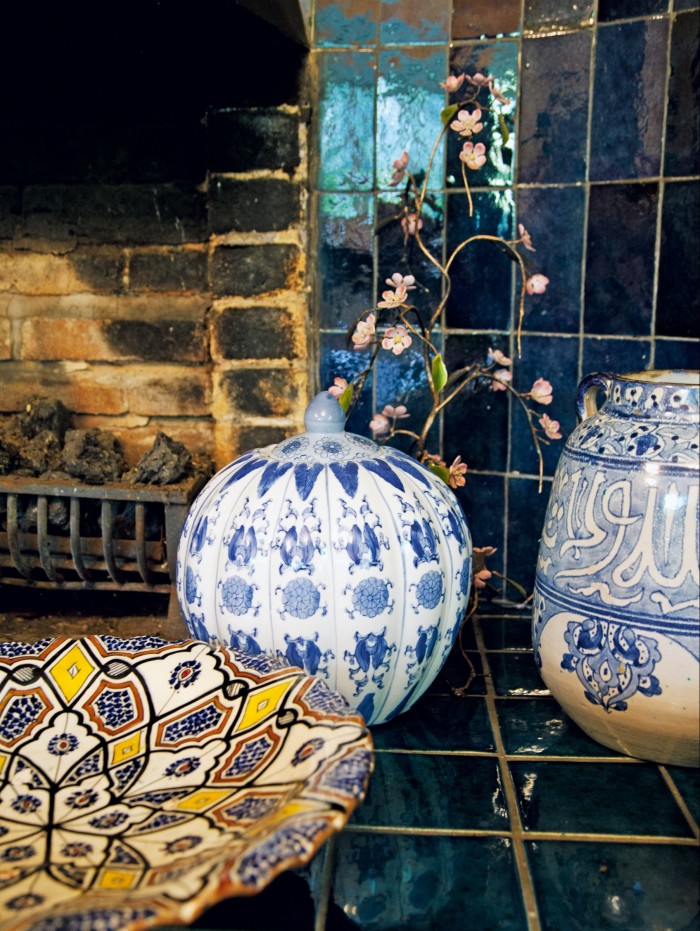
The last item of clothing I added to my wardrobe is a bright-green linen top by Sahara. I went to Fenwick – the first time I’ve been shopping since lockdown – and as I had been wearing so much black and grey in the winter, I was drawn to this beautiful green. I like strong colours such as saffron and a particular vibrant blue; always a plain colour – I don’t go for patterns.
With time on my hands, I go for long walks. A little path next to my house leads to Hampstead Heath and during lockdown I would walk alone in the evenings. I got into the habit and now my friends and colleagues – a lot of food writers – come and join me.
If I didn’t live in London, the city I would live in is Amsterdam. I like the human scale. All I want to do when I’m there is walk and walk around the canals, stopping for a coffee, a pea soup or a pancake, and visiting the museums. I go to the Van Gogh Museum. I like to see the Rembrandts at the Rijksmuseum. My special one is the Museum Van Loon, housed in a grand 17th-century canal house. I once hosted a dinner there. When I first went to the Netherlands when I was much younger the food was as horrible as it was when I first came to London. Now there is as much enthusiasm, energy and excitement about good food there as there is here, but I don’t like to single out certain chefs and restaurants.
The one artist whose work I would collect if I could is Claude Monet: one of his water lily paintings. When in Paris, I live a few minutes from the Musée de l’Orangerie, where there’s a room with huge water lilies all around the walls. I can sit there for half an hour just enjoying being there, feeling the beauty, the peace. I would love to have my walls here full of them.
Med: A Cookbook by Claudia Roden is published by Ebury Press at £28
Comments